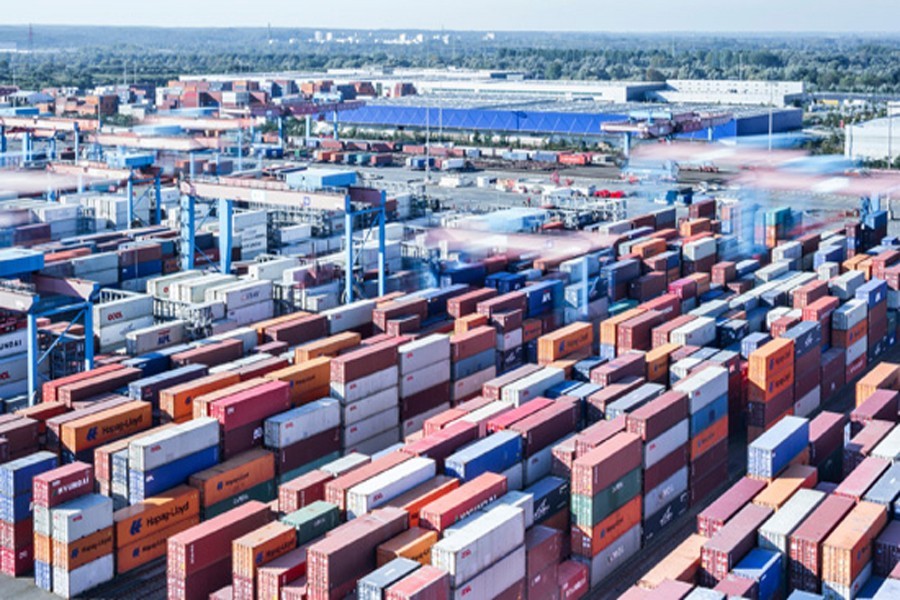It's really heartening to know that the Chittagong Port has recently been recognised as the 70th busiest container port in the world. It moves one notch up in this year's ranking of the globally-acclaimed Lloyd's List. Handling 25,66,597 TEUs (twenty-foot equivalent units) of containers in 2017, which is 9.36 per cent up from 23,46,909 TEUs in 2016, was the reason behind its improvement in ranking. The country's premier seaport's elevation in terms of business notwithstanding, efficiency in its service delivery remains a bone of contention. This latest ranking, therefore, has brought to the fore the issue of the port's much-needed expansion and enhancement of capacity as part of ensuring its overall efficiency.
There is no doubt that the country's increased volume of foreign trade in recent years has contributed to enhanced container handling through the port. But the port users are often found complaining about slow delivery of containers and their transportation to private inland container depots (ICDs). There are a number of reasons for this. It is a fact that the country's busiest seaport is grappling with huge vessel congestion in absence of enough jetties. Space shortage at the yards is considered one of the drawbacks behind frequent disruption of container handling. Frequent worker unrest is yet another pesky issue. And then there is a lack of modern logistics and infrastructural facilities. All these contribute to the port users' dissatisfaction.
Of late, three new quayside gantry cranes have been brought to boost container handling capacity. Although the authorities concerned encourage geared vessel use for self-loading/discharging that can handle a maximum of 15 containers every hour, the new cranes will double the rate. Currently, it takes 72-96 hours to complete container handling of vessels with 1,000 TEUs capacity. The new cranes, if provided with enough space in the port yards, will reduce the time to 48 hours. At present, four such cranes are in operation at Chittagong Container Terminal's two jetties.
The problem of rationally using the port is that the mother vessels can unload goods in 21 days, but they have to wait for a month and a half to complete the task due to shortage of jetties and in case of such delays, port users have to pay dearly in demurrages. Experts are of the opinion that increase in international trade volume presented before the port a new challenge, but no attention was paid for long to the expansion or capacity enhancement of the port. This is why there is always a congestion of ships at the port. It experienced two spells of severe container congestion last month alone -- apparently for space constraints.
The import-laden containers lying in the port yards often cross all limits. With storage facility of 37,620 TEUs, it doesn't have designated space to store the extra bulk. Usually 3,000 TEUs to 4,000 TEUs of import-laden containers are delivered on a normal working day. The problem arises when there is a delay in movement of import containers from the port to the ICDs from where importers receive their goods.
The port users, therefore, have underscored the importance of infrastructure development and logistics supply to cope with the rising container transportation. Although Chittagong moved up one spot in 2018 Lloyd's List's One Hundred Container Ports, the climb, Chamber leaders rightly think, could be higher if required equipment like gantry cranes were installed earlier and infrastructure development was on the fast-track.
As a growing economy, Bangladesh's foreign trade is consistently on the rise. Chittagong Port, the country's lifeline for export-import, often experiences container and vessel congestion. If businesses suffer for dearth of enough jetties and yards, there is no alternative to building the required infrastructure for raising the port's capacity. The authorities should, therefore, urgently chart a roadmap for expansion and capacity enhancement of the port that handles 98 per cent of the total containerised goods transportation in the country.


